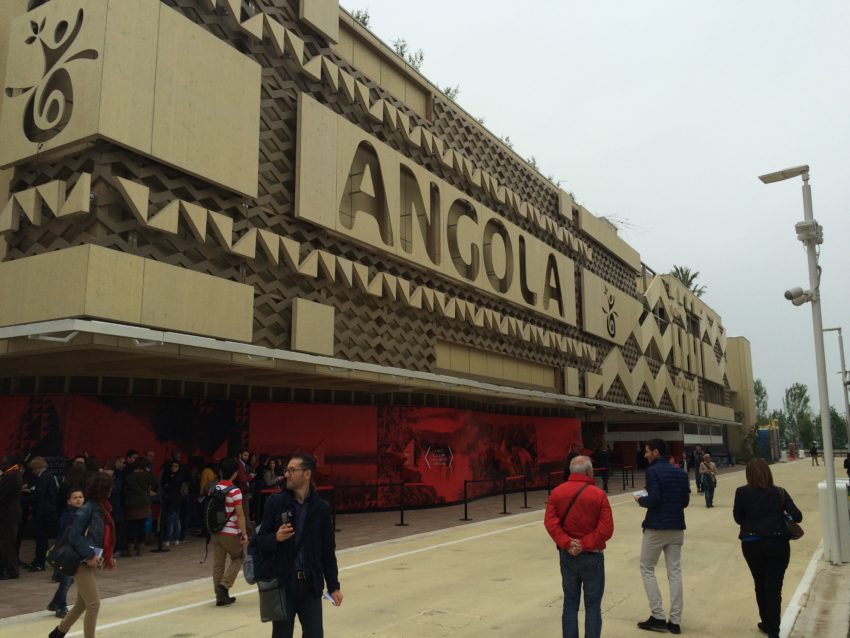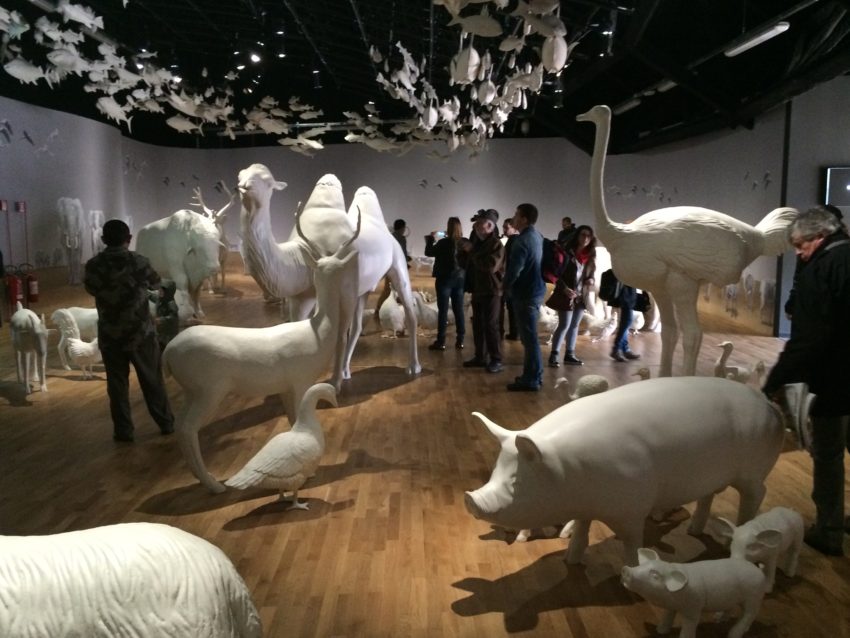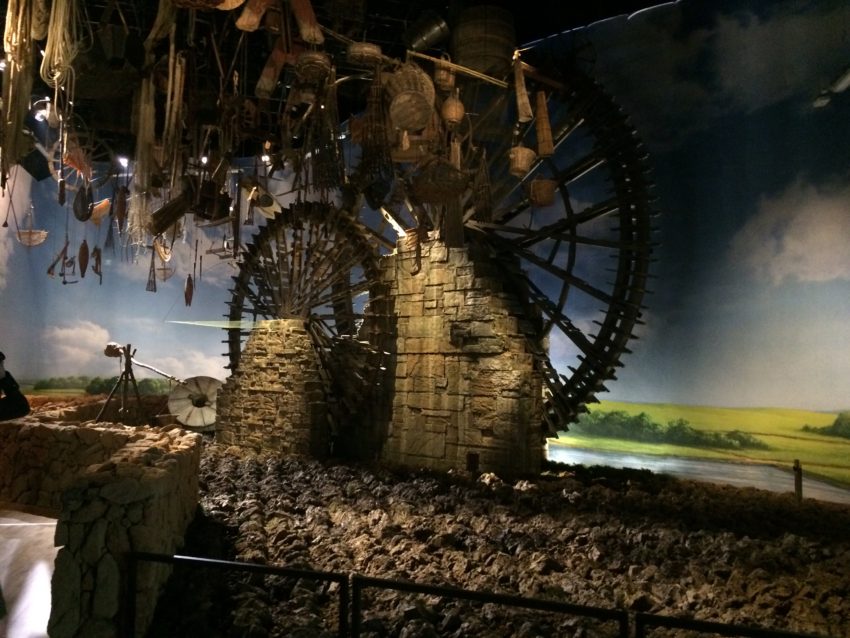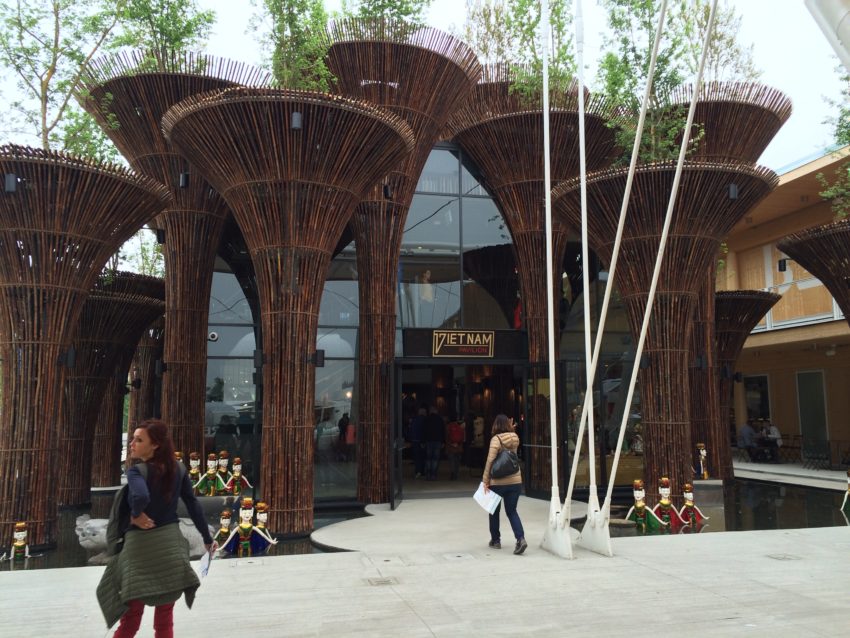Milan is Italy’s gray old lady but she’s opening hungry eyes with Expo 2015

MILAN — It’s the fashion capital of the most fashion-conscious country in the world. Financially, it’s the New York of Italy. In a culture where art is worshipped and beauty is priced, its people preen and strut like peacocks at auction. When Milan sneezes, the rest of Italy reaches up to wipe its nose with a Gucci hanky and checks to see if the euro fell. But let me tell you a little secret about Milan.
Milan sucks.
Milan is Newark with a big church. It’s gray and cold and heartless. While Southern Italy slows life to the beat of a mandolin and a lover’s heart, Milan races trying to keep up with New York, Paris and Hong Kong. Its location near the Alps is negated by a seemingly constant slate sky that gives Milan the feel of an everlasting winter.
Thanks to Benito Mussolini’s savvy career move of befriending Adolf Hitler, Allied forces during World War II bombed much of Milan back to the Stone Age. Today Milan is a hodgepodge of gray, mid-20th century architecture save for its admittedly spectacular 14th-century Duomo, the biggest church in Italy. Milan’s contribution to Italian cuisine is highlighted by the ossobuco, a messy, soupy slop of veal shanks and vegetables. Its pizza may be the worst in Italy, much of it akin to what I remembered served in my high school cafeteria and trashed by half the football team.
Milan’s soccer teams suck, too.
However, while here on assignment recently, Milan did soften me. The Milanese were as nice as my beloved Romans and for the first time in many visits to Milan, I actually saw the sun. The models strutting down the pristine sidewalks finally had a reason to wear their 300-euro sunglasses.

Another reason I came to Milan was why much of the world is coming this year, too. It’s Expo 2015, a six-month-long celebration of arguably the most popular subject in the world: food. An estimated 20 million people are expected to check out this year’s theme of food and sustainability: How do we help feed a world where 805 million out of a world population of 7 billion (8.7 percent) are malnourished?
It’s a massive subject that has baffled mankind ever since the Roman Empire imploded from over expansion about 1,600 years ago. It’s why Expo 2015 looks like a small city. I took Milan’s shiny, efficient subway (OK, it has one thing going for it) an hour to 10 miles to the northwest of town. In a massive space stretching six kilometers, hundreds of pavilions and exhibits explain the world food crisis in such detail I felt like buying a pizza and shipping it to Haiti. (One double cheese pizza from Milan could feed a Haitian village. Trust me.) There’s a pavilion for 145 countries and all 20 regions in Italy.
The Expo features a man-made lake, a 12,000-seat amphitheater and a 6,000-seat auditorium. It would take several days to tour but the most important one is the first one. When I approached the Zero Pavilion from the long string of ticket booths, it looked like a giant wooden whale. The massive building has a curved roof that humps at the top with one end, the tail, shaped like a pyramid. Zero Pavilion explores the 1,000-year relationship between humans and food. Not that the subject is complex, but the pavilion has 500 screens giving data.

The building is as much a museum as it is a school. I walked in and the first room looked like the Library of Congress. From floor to ceiling about four stories high is nothing but book shelves with drawers sticking out as if emptied by students cramming for finals. It’s intended to represent our memory, or lack thereof, of the plight of our fellow man, not only in sub-Saharan Africa but maybe across town in a tenement building.

I turned the corner and I was immediately dwarfed by the biggest movie screen I’ve ever seen. The 30-foot-high screen filled three-quarters of a round room and it displayed a film of beautifully photographed scenes of food production, from a Roman village where goats were led to slaughter to a farm girl carrying milk on a farm. There was no script. A total of 53 countries contributed short films on various food subjects ranging from food and life to food and wellness.
Through a door stood a giant artificial tree, covered with 380,000 leaves that were glued on by hand, breaking through a roof. It represented, according to the literature, the “supremacy of nature, pushing us to reconsider the origins of the world.”

Another room has sculptures of every conceivable animal, all life-size and carved in what appears to be white marble. This is the room explaining domestication of animals. Since it also included a dog, I’m assuming the Chinese will see this as another food pavilion.
The pavilion was a wealth of information, nearly all of it depressing. One third of all food is lost or wasted. One quarter of that total could feed all the hungry in the world. I find that hard to believe. I’d like to see a bengal tiger eat a day-old loaf of bread from my public market in Rome.
However, the amount of food waste is astonishing. In a world with 7 billion people, we produce enough food for 12 billion, yet every year almost 900 million die of hunger. I disregarded its comically low statistic that 1.5 million people are obese, unless they’re just talking about the state of Georgia.

But there seems to be hope. I learned that 40 percent of the earth’s land is devoted to agriculture. The Ireland pavilion taught me that 80 percent of its land is pasture. The other 20 percent is pubs. (I made up that last part.)

Seriously, I walked out of the Zero Pavilion thankful that I have never gone hungry, that I grew up in a country where any kind of food is available and I now live in a country where every food I eat produces obscene public moaning.
It was with that in mind that I wandered down the six-kilometer outdoor pathway flanked by pavilions from 145 countries representing 94 percent of the world’s population. National flags lined both sides for as far as I could see. The pavilions were as much works of art as sources of information or food. Nepal’s pavilion has a windy cement walkway that represented a trekking route ending in a big Buddhist temple. Angola’s has a giant baobab tree in the middle of it. Bahrain’s features 10 small botanical gardens. Iran’s looks like a giant tent billowing in the wind. Mexico’s is shaped like a giant corn cob.

Walking around so much food information made me starving. Unfortunately, Expo 2015 is more about feeding the hungry than feeding the visitors. I thought I could shop around and eat from country to country. You know, have a soup from Bolivia then a couscous from Morocco, a steak from Argentina and some chocolate from Russia. Nope. I saw no pavilions actually selling food outside. I did nearly eat my way through the chocolate pavilions from Italy’s Perugini and Switzerland’s Lindt. A pretty, short, dark-eyed Uruguayan in a long-white native dress lured me into Uruguay’s makeshift steakhouse. It was packed and I took a seat at the bar, reminding me of my early days eating at a Woolworth’s. These weren’t Woolworth’s prices. a Uruguayan steak I eyed was 32 euros.

I wound up starving and in a hurry and horribly disappointed when I wound up at Eataly. It’s Italy’s high-end food mall that started in Milan and has spread to 31 stores in five countries. It’s a grand idea. Unfortunately, there’s an Eataly next to my airport bus stop 20 minutes from my apartment. I went to the stand representing one of only three Italian regions I’ve never visited. I learned a traditional dish in Calabria (the toe of Italy’s boot) is ‘nduja pasta. I also learned it’s the spiciest sausage I’ve ever had in my life.

However, I didn’t walk away hungry from Expo 2015. Maybe that’s their point. Filled with knowledge more than food, maybe the balance of world nutrition will right itself some day. Here’s an idea for starters, Milan.
Open a pizzeria in Haiti.


June 6, 2017 @ 12:46 pm
My partner and I are sitting in our Milan hotel room reading your blog, in fits of laughter. Couldn’t agree more with your observations on Milan. Your writing is hysterical but has made us miss Florence even more.
June 6, 2017 @ 2:18 pm
Thanks for the great note. Yeah, Milan still sucks. It always will. Find me a decent pizza and one positive review about osso buco and I might change my mind.
June 6, 2017 @ 3:39 pm
We just at the worst Margherita pizza and spaghetti pomadoro I’ve ever had! Absolutely horrid!
June 7, 2017 @ 12:12 am
Give me the name so I can avoid it.